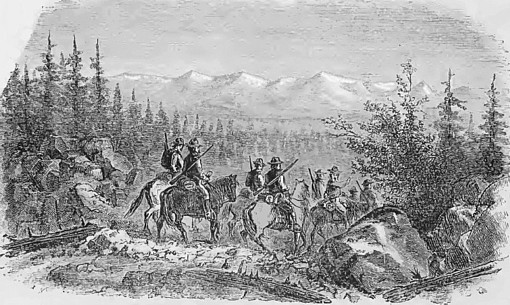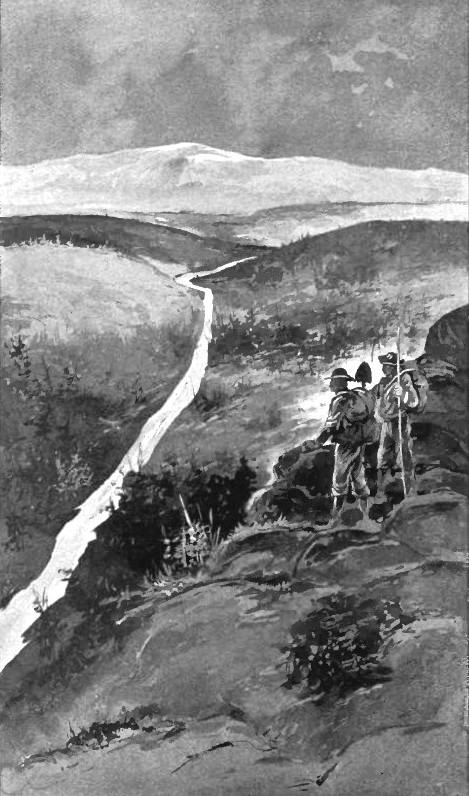The tin ores generally appear in distinct fissure veins or composite lodes; in part they fill open cavities and in such ores a banded structure may be emphasized by the deposition of lithium mica in coarse foils along the walls. Often, however, the fissures are merely narrow breaks and the ore is chiefly disseminated in the adjoining altered country rock. In ores of this kind also a rude banding may result from the accumulation of tourmaline or cassiterite along certain lines parallel to the fissure. The metasomatic alteration is strong and characteristic, resulting in coarse-grained rocks which contain muscovite, quartz, and topaz or tourmaline and to which the name greisen is usually applied. Where tourmaline takes the place of topaz we may speak of tourmaline greisen or luxullianite (Cornwall). Granite, granite porphyry, clay slate, calcareous shale, limestone, and diabase are affected by this mode of alteration where they form the country rock of the veins, but the development differs in the different rocks. Complete silicification of the wall rocks is a phase of subordinate importance. While the total changes in composition of the original rock may be much less pronounced than in other veins, the metasomatic process is evidently more intense, pointing to a greater degree of heat and especially energetic action of the mineralizing fluids.
In granites and porphyries adjoining the more common or Saxon type of veins the feldspars and the brown mica are replaced by quartz, topaz, and muscovite, in large crystals or foils. Chlorite is sometimes present. Topaz may also replace quartz grains. Sometimes crystals or radial aggregates form. Cassiterite, wolframite, and more rarely sulphides appear as accessories in the greisen, which spreads out from the fissure plane for a few inches or a few feet. The tin minerals are Cassiterite, or tinstone, and Stannite, or tin pyrites, cassiterite is by far the more important of the two. The cassiterite veins form a rather sharply defined group, connected by transitions on the one hand with the copper ore and tourmaline veins and on the other hand with the wolframite and molybdenite veins. They present the constant mineral association of such ore minerals as cassiterite, molybdenite, arsenopyrite, wolframite (also scheelite), bismuth, and bismuthinite, with less abundant pyrite, pyrrhotite, chalcopyrite, galena, and sphalerite.
Among the gangue minerals quartz always predominates and is accompanied by lithium mica, fluorite, topaz, tourmaline, axinite, and apatite; more rarely beryl. Specular heamatite, magnetite, and ilmenite are sometimes present. Of the primary carbonates, siderite is the only one which is reported from the cassiterite veins. On the other hand, the pyroxenes and amphiboles, as well as magnesium micas and garnet, are absent. Orthoclase is reported from several localities but does not assume the form of adularia. Chlorite is occasionally present. Kaolin and allied hydrous aluminum silicates are often recorded, but are probably products of secondary alteration near the surface, as are various hydrous arsenates and phosphates.
Cassiterite, the oxide of tin, is the principal ore mineral. The only other mineral containing tin which is of economic importance is stannite (Cu2FeSnS4), which is seldom found in pegmatites and in the cassiterite veins proper, but is an important ore in certain Bolivian veins. Small quantities of tin, probably as cassiterite, are sometimes contained in pyrite or sphalerite of other classes of veins for instance, in those of Freiberg. The paragenesis typical of many cassiterite veins is such that the tin-bearing veins appear in or near granites (though not all granites contain them), or in their acidic porphyries. Only exceptionally, as in Mexico, are they connected with rhyolitic rocks. The tenor of the ores is usually low, in some ores as low as one-half of 1 per cent, of tin. Some cassiterite veins contain bismuth and tungsten minerals in commercial quantities, and considerable copper is often present. A little silver ore and a trace of gold are found even in the vein of Cornwall, while in the Bolivian veins silver minerals occur in important amounts.
The principal tin deposits of Tasmania are those of Mount Bischoff, where schists are intruded by dikes of granite porphyry, both rocks being rich in metasomatic tourmaline and topaz. The whole forms a weathered mass of rock traversed by cassiterite veins a stockwork, large portions of which averaged 2 to 3 percent. tin. The quartz porphyry dikes contain cassiterite, with much topaz and subordinate tourmaline. The groundmass is changed to a topaz-quartz aggregate, while the feldspars are transformed to cassiterite, pyrite, pyrrhotite, arsenopyrite, and fluorite. The quartz phenocrysts remain intact. The tin-bearing district of Tasmania contains deposits of various kinds which appear to show an unusually complete series of transitions. Silurian sediments are intruded by granite. There is a gradation from cassiterite veins, with tourmaline, in granite, to contact-metamorphic deposits, containing copper, lead, and zinc, in which cassiterite has been found, and from these to normal banded veins containing pyrite, chalcopyrite, galena, and stannite, and finally to galena-siderite veins. In other words, the gradation is one from high-temperature deposits to those formed in the cooler zone with a corresponding change of minerals deposited. In the final product quartz and minute crystals of zircon are the only constituents which have withstood the altering processes. Siderite appears in places as a metasomatic product. Other minerals present include magnetite, sphalerite, wolframite and siderite.
Metasomatic Processes
in the Deposits of Cornwall.
In Cornwall and Devonshire, tin-ore deposits are found in an area
occupied by Palaeozoic sediments (Ordovician, Devonian and Carboniferous)
that have been invaded and metamorphosed on an extensive scale by intrusions
of granite and quartz-porphyry. The tin ore occurs to some extent
disseminated in the granites, but occurs chiefly in the altered sediments (killas),
and is particularly abundant in the contact-metamorphosed zone around the
granite intrusion. The Cornwall granites, which consist mainly of quartz,
acidic feldspars muscovite, and biotite, also carry some wolframite, pyrite,
chalcopyrite, arsenopyrite, tourmaline, topaz, and fluorite, which Flett
considers of magmatic origin. The greisen along the Cornwall veins consists
chiefly of granular quartz and muscovite, often with aggregates of topaz
spreading through the partly altered feldspars. Fluorite is occasionally
present. The
albite is more resistant than orthoclase or perthite. Some of the
secondary quartz is filled with liquid inclusions containing small cubical
crystals and mobile bubbles. Excellent pseudomorphs of cassiterite after
orthoclase have been found at Cornwall; pseudomorphs of tourmaline after
feldspar and of topaz and cassiterite after quartz are also described by
Flett. The elvans, or quartz porphyries, are also altered to quartz,
tourmaline, topaz, and fluorite. Kaolin where present appears to be due to a
later process.
The greisen is essentially a vein formation in Cornwall and is not known to occur in broad masses or in patches either within the granite or along the contact. The occurrence along the contact is typical of the tourmaline rock, which, however, in places also appears along the veins. Tourmalinization is frequently superimposed upon the normal contact-metamorphic rocks, of which hornfels is the most common. There is not much evidence to show the relative age of the two processes, but the greisen was probably developed later than the tourmaline rocks. Both are held to have been formed before the interior of the granite was fully crystallized. The cassiterite of the Cornish ore is mostly in a very finely divided condition in the impregnated rock, and the ore has to be crushed very fine and elaborately dressed before the cassiterite can be obtained in a sufficiently concentrated condition.
Considerable portions of the granites of Cornwall have been altered by kaolinization, but Flett believes, with good reason, that this process took place at a lower temperature than the development of topaz, tourmaline, and white mica. Kaolinized rocks appear mainly in the central parts of the granite masses, while the tourmaline rock, usually called "schorl," and greisen lie mostly along the peripheral parts. The kaolinized portions often form pipes having rudely circular outlines; the granite is altered to kaolin, muscovite, and quartz, and the product rarely contains cassiterite. The composition differs little from that of the granites. It seems probable that these kaolin deposits are due to the oxidation of distinctly later pyritic impregnations, by the action of the liberated sulphuric acid on the feldspar and sericite. It should also be recalled that topaz is rather easily changed to products allied to kaolin.
Return
to Metal Ores Page:
Precious and Base Metal Ores


